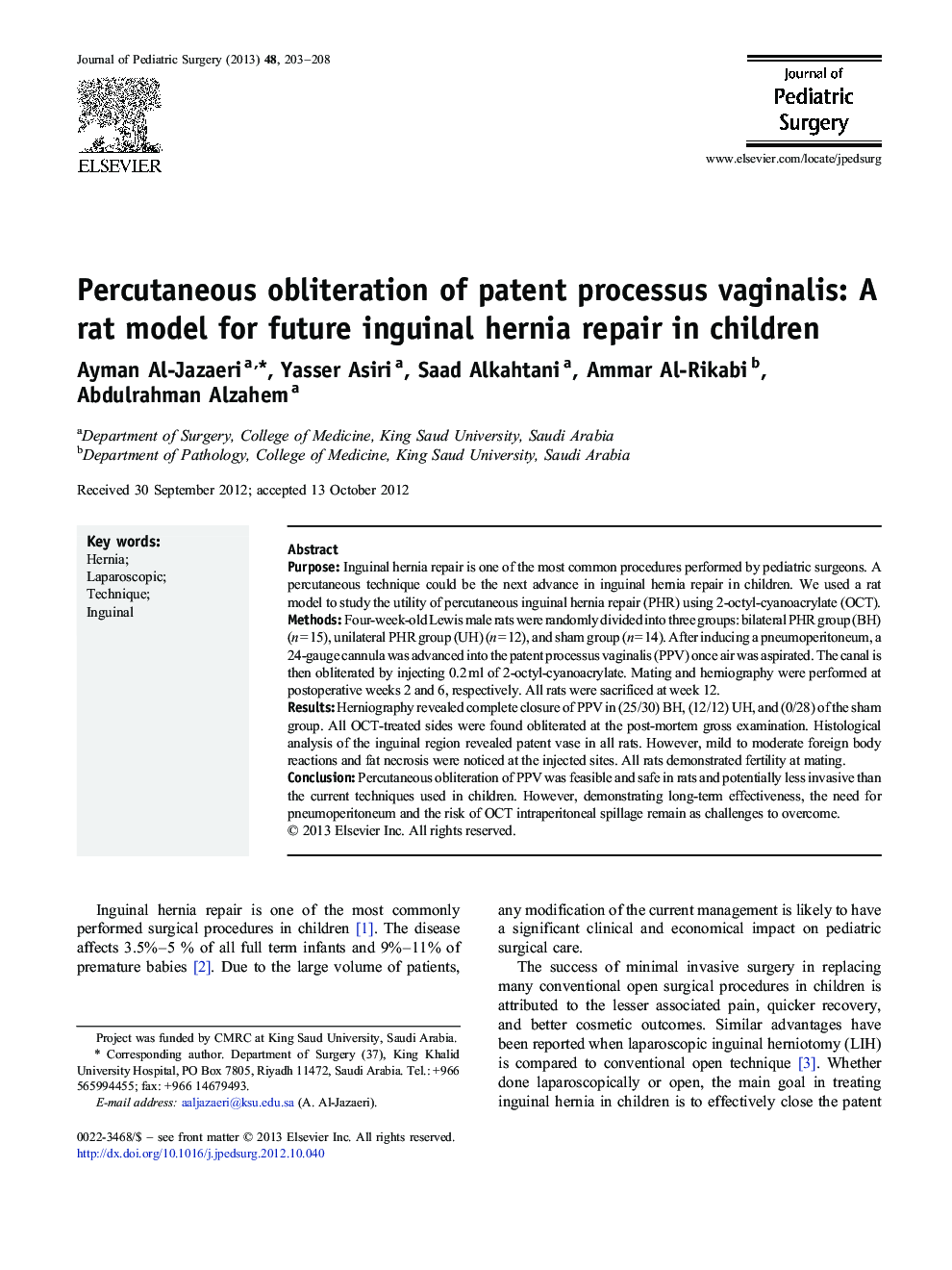| کد مقاله | کد نشریه | سال انتشار | مقاله انگلیسی | نسخه تمام متن |
|---|---|---|---|---|
| 4156338 | 1273771 | 2013 | 6 صفحه PDF | دانلود رایگان |

PurposeInguinal hernia repair is one of the most common procedures performed by pediatric surgeons. A percutaneous technique could be the next advance in inguinal hernia repair in children. We used a rat model to study the utility of percutaneous inguinal hernia repair (PHR) using 2-octyl-cyanoacrylate (OCT).MethodsFour-week-old Lewis male rats were randomly divided into three groups: bilateral PHR group (BH) (n = 15), unilateral PHR group (UH) (n = 12), and sham group (n = 14). After inducing a pneumoperitoneum, a 24-gauge cannula was advanced into the patent processus vaginalis (PPV) once air was aspirated. The canal is then obliterated by injecting 0.2 ml of 2-octyl-cyanoacrylate. Mating and herniography were performed at postoperative weeks 2 and 6, respectively. All rats were sacrificed at week 12.ResultsHerniography revealed complete closure of PPV in (25/30) BH, (12/12) UH, and (0/28) of the sham group. All OCT-treated sides were found obliterated at the post-mortem gross examination. Histological analysis of the inguinal region revealed patent vase in all rats. However, mild to moderate foreign body reactions and fat necrosis were noticed at the injected sites. All rats demonstrated fertility at mating.ConclusionPercutaneous obliteration of PPV was feasible and safe in rats and potentially less invasive than the current techniques used in children. However, demonstrating long-term effectiveness, the need for pneumoperitoneum and the risk of OCT intraperitoneal spillage remain as challenges to overcome.
Journal: Journal of Pediatric Surgery - Volume 48, Issue 1, January 2013, Pages 203–208